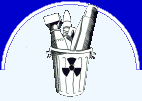


 |
 |  | ||||
|
|
|
|
| |||
| vous etes ici Homepage > Background papers > The second nuclear age | |
|
The second nuclear age By David Krieger Published 18 September 2002 “The world has entered a new nuclear age, a second nuclear age. The danger is rising that nuclear weapons will be used against the United States. Just as bad, the danger is rising that the United States will use nuclear weapons against others....” Jonathan Schell With the fall of the Berlin Wall and the breakup of the Soviet Union, many Americans gave a deep sigh of relief and pronounced the nuclear threat at an end. It was a heady time. I can remember being asked, “What will the Nuclear Age Peace Foundation do now that the nuclear threat is gone?” My response was that the nuclear threat was still with us despite these momentous changes in the geopolitical landscape. It was far too soon to pronounce the Nuclear Age dead. In retrospect, from a vantage point of more than 12 years after these tectonic shifts in geopolitics, we can see that the Nuclear Age, with new and growing dangers, is still with us. The first half-century of the Nuclear Age was marked by a mad arms race between the United States and the former Soviet Union that resulted in the development and deployment of tens of thousands of nuclear weapons capable of destroying civilization and most life on Earth. While the nuclear standoff between the US and former USSR is no longer the extraordinary danger it was, new nuclear dangers have arisen that have led many astute observers to the conclusion that we have entered a second Nuclear Age. Among these new dangers are:
The United States, as the world’s sole surviving superpower, has had the opportunity to lead the world toward a nuclear weapons free future. It is an opportunity that our country has largely rejected, and has done so at its own peril. Political leaders in the United States have yet to grasp that nuclear weapons make us less secure rather than more so, and their policies have reflected this failure to comprehend the dangers of the second Nuclear Age. In the year 2000, the parties to the Nuclear Non-Proliferation Treaty, including the United States, agreed to 13 Practical Steps for Nuclear Disarmament. These included “[a]n unequivocal undertaking by the nuclear-weapon states to accomplish the total elimination of their nuclear arsenals,” along with specific steps such as ratification and entry into force of the Comprehensive Test Ban Treaty (CTBT), preserving and strengthening the Anti-Ballistic Missile (ABM) Treaty, and applying the principle of irreversibility to nuclear disarmament. In each of these areas the United States, under the Bush administration, has led in the opposite direction. The administration’s policies have sent a message to the world that the world’s strongest military power finds nuclear weapons useful for its national security and plans to maintain its nuclear arsenal for the indefinite future. The Bush administration has opposed ratification of the CTBT and has withdrawn from the ABM Treaty. Its approach to nuclear disarmament has been to employ maximum flexibility and make reductions fully reversible. The US pact with Russia, the Strategic Offensive Reductions Treaty (SORT), signed by Presidents Bush and Putin in May 2002, calls for reductions in deployed strategic nuclear weapons to between 1,700 and 2,200 weapons on each side by the year 2012. The treaty has no timetable other than the final date to achieve these reductions, and there is no requirement to make these reductions irreversible. The Bush administration has already announced that it plans to put the weapons it takes off active deployment status into storage ready for redeployment on short notice. The Russians are likely to follow suit, creating more opportunity for the stored nuclear weapons in both countries to fall into the hands of terrorists. In the meantime, the US and Russia are each maintaining over 2,000 nuclear weapons on hair-trigger alert, subject to being launched accidentally. In addition, the Bush administration pursued an illegal preventive war against Iraq because of its purported, but never found, weapons of mass destruction. This action sent a message to North Korea, Iran and other states that if they want to be more secure from US attack, they had better develop nuclear forces to deter the US. North Korea has repeatedly made a simple request of the US. They have asked for security assurances from the US that they will not be attacked. This is not unreasonable considering that the Korean War has never officially ended, that the US maintains some 40,000 troops near the Demilitarized Zone that separates the two Koreas, that the US keeps nuclear-armed submarines in the waters off the Korean Peninsula, and that the Bush administration has pursued a doctrine of preemption. In return for a Non-Aggression Pact from the US, the North Koreans have indicated that they would give up their nuclear weapons program and rejoin the Nuclear Non-Proliferation Treaty. It would be a great shame if Americans only awakened to the dangers of the second Nuclear Age with the detonation of one or more nuclear weapons somewhere in the world. Given the increased threats associated with terrorism and the dangers that nuclear weapons or bomb-grade nuclear materials could fall into the hands of terrorists, it is not beyond the realm of possibility that the next detonation of a nuclear weapon or other weapon of mass destruction could take place in a city in the United States. It is of critical importance that Americans be made aware of these dangers and reverse our policies before we are confronted by such tragedy. The Nuclear Age Peace Foundation has set forth a series of needed steps that have been widely endorsed by prominent leaders, including 38 Nobel Laureates, in its Appeal to End the Nuclear Weapons Threat to Humanity and All Life. These steps are de-alerting all nuclear weapons, reaffirming commitments to the Comprehensive Test Ban Treaty and the Anti-Ballistic Missile Treaty, commencing good faith negotiations on a treaty to eliminate all nuclear weapons, declaring a policy of No First Use of nuclear weapons and reallocating resources from nuclear arsenals to improving human health, education and welfare throughout the world. Our challenge is to translate this program into action. It will require a sea change in the thinking of US political leaders. This cannot happen without a grassroots movement from below, that is, from ordinary citizens, who hold the highest office in the land. The starting point is the recognition that the Nuclear Age did not end with the fall of the Berlin Wall, and that we are now living in the second Nuclear Age. We ask for your support in this fight for the future of humanity and all life on our planet. David Krieger is president of the Nuclear Age Peace Foundation (www.wagingpeace.org). He is the co-author of Choose Hope, Your Role in Waging Peace in the Nuclear Age. David Krieger, President View online : Nuclear Age Peace Foundation
|
Also in this section navigation motscles | ||||||||||||||||||||||||||||||||||||||||||||||||||||||||||||||||||||||
| visites : | 1230958 |
|
Site powered by SPIP
design et fonction Easter-Eggs |